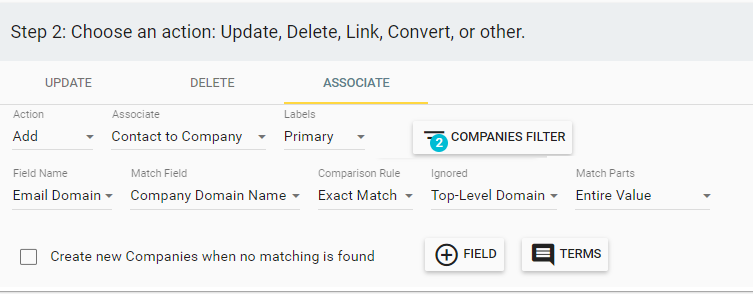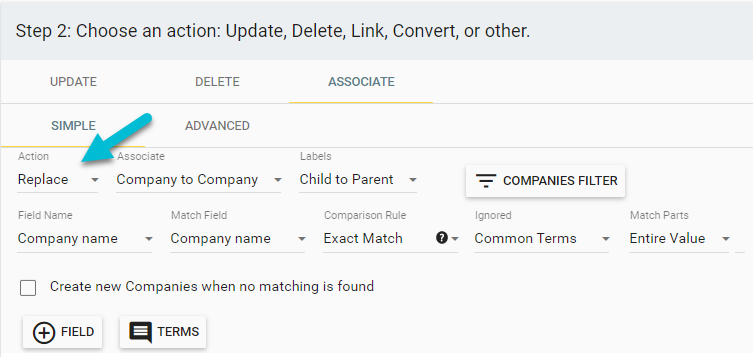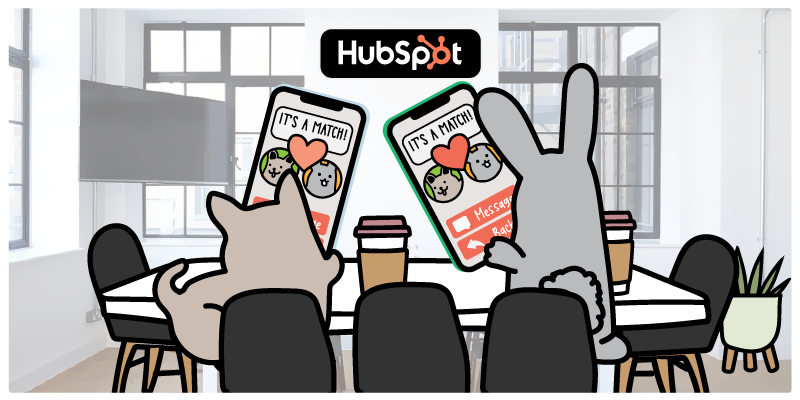Few things have more of a negative impact on daily operations than improperly associating, or failing to associate, contacts to companies in HubSpot. Improperly associated contacts act as a roadblock for your teams.
Your marketing teams will miss out on opportunities to personalize communications using contact record and company record data. Your sales teams, especially in account-based sales, will fail to engage with important stakeholders and risk imploding important deals as a result. Workflows will break. Campaigns will be stalled or need to be scrapped altogether until you can fix your association problems. You might make embarrassing mistakes that could harm your reputation with a prospect or whole accounts.
Account-based marketing (ABM) and sales rely on accurate associations between contacts and companies to be effective, especially with HubSpot’s recent release of the HubSpot Marketing Hub Enterprise. ABM Teams require a complete picture of the accounts that they are targeting so that they can tailor communications to speak to a wide range of stakeholders, each with their own needs and concerns. When you have unassociated contacts and or duplicate company records, your sales reps will continuously step on each other and undermine their own efforts.
Customer support and success teams will not be able to see the full context of an account’s interactions, making it difficult for them to help customers in a way that feels informed and authentic.
Free-floating, unassociated contacts, deals, and companies are a pain that is felt across the entirety of your organization. They hinder any team that relies on your HubSpot data to do their jobs. At the very least, unassociated contacts add additional steps to processes and tasks in teams across your company — slowing them down, hurting their ability to communicate with customers and prospects, and causing frustration as the issues go unresolved.
Luckily, HubSpot does offer automatic association features that can help to alleviate this pain, but not without some considerations regarding how the feature works and when you’ll need to take extra steps to ensure you have your contacts appropriately associated.
In this article, we’ll dive deep into HubSpot’s auto-association feature, used when creating new contacts. We’ll look at how the feature works, why it is so useful, and when the feature might not be enough to ensure that all of your contacts have proper associations.
How HubSpot’s Auto-Association Feature Works
When HubSpot’s “Automatically create and associate companies with contacts” feature is turned on (this can be done in the Settings>Contacts & Companies>Companies page), HubSpot will automatically associate newly created contacts with companies. But to associate contacts to companies, you must ensure that certain fields are aligned. With this, you enable automatic association.
This association is made using the contact’s email domain and the company's domain name. For instance, if the feature were toggled on, jane@acme.com would be automatically associated with the company whose domain was acme.com. The website URL property is what is responsible for matching.
If the contact is using a free email provider like Gmail or Hotmail, HubSpot will use the Website URL field to try to match with a company domain name. If the contact is using both a freemail email account provider and their Website URL field isn’t populated, the contact record will remain unassociated with a company.
If a matching company record doesn’t already exist, HubSpot will automatically create the company record and populate it using data from HubSpot’s database. This is great because not only is HubSpot creating the record for you, but they are enriching it with their own internal data.
You can blacklist (exclude) certain domains from being used with this feature if needed.
This is an excellent feature that helps companies to keep the number of free-floating, unassociated contacts in their database to a minimum. When you enable automatic association, you'll enjoy many benefits that would otherwise hinder your efforts.
|
Related articles The Business Case Against Improperly Associated Contacts and Companies in Your CRM Declutter Your CRM By Purging Low-Quality Data Automatically |
Benefits of HubSpot’s Auto-Association Feature
The benefits of the feature are clear. When you import a contact that is unassociated with a company, HubSpot automatically associates with the company. When you associate companies to contacts, you'll have less free-floating contacts in your database, going unserved by your sales team.
For many of your contacts, this will be very useful and help you to cut back on the number of free-floating contacts in your database by quite a bit.
Another added benefit is that when HubSpot cannot identify a matching company in your database, they will automatically create one and enrich it using their data. This is great because you can count on these newly created companies to have full profiles.
However, while this feature from HubSpot should help to reduce a significant portion of your unassociated contacts in your database over time, there are some situations where this solution may be less than ideal.
Potential Roadblocks to Consider
While the feature is a good starting point, there are some situations in which HubSpot’s system might create unintended consequences and issues in certain situations.
The feature relies on the website URL property to match new contacts to companies. While this will catch a majority of free-floating contacts, there are many reasons why a contact’s email domain may not match their company URL domain name. These situations can cause HubSpot’s auto-association feature to create duplicate company records, cluttering your database. Some of these situations include:
- Visitors may use a personal email. Maybe your contact filled out your form and provided their personal email address or freemail email account rather than a company one. In these situations, you would not be able to correctly match the contact record with the company using HubSpot’s automatic association feature. A freemail email account will not help you to connect a visitor to a company using their email address, which is the most common method.
- Contacts may use different domain extensions. Maybe the contact’s email uses “microsoft.net” while the company domain itself is “microsoft.com.” Legacy domain emails from companies that have changed domains is also a consideration.
- Visitors may use different subdomains. Two professors at the same school — john@math.school.edu and jane@science.school.edu — both work at the same school, but would create separate companies using HubSpot automatic association feature, which may or may not be the right choice depending on how your company handles situations like this.
- Contacts may work from a country outside of the company’s headquarters. International countries are another consideration. An employee that works in the United Kingdom would likely use a “co.uk” email address, even when the company is based in the United States and uses “.com” — this would create a duplicate company in HubSpot.
- Companies going through rebranding, mergers and acquisitions. When companies change their name or re-brand, email addresses change. This can break associations and cause duplicate records that can be hard to detect.
- There is no way to preview changes. Associations are created in real-time, automatically using this feature. You do not have the opportunity to double-check changes before they go live in your HubSpot database.
- Removing associations requires some work. When the wrong associations are made, removing them requires one-by-one, or exporting to CSV, and re-importing.
As you can see from these examples, there are many situations that you might not initially consider that can break the feature or cause unintended consequences.
Luckily, there are some simple steps that you can take to enjoy the benefits of the auto-association feature while mitigating the issues that come with it.
How Insycle Can Help With Associating Contacts and Companies
HubSpot’s auto-association feature can help any company that consistently imports, manually creates new contacts, or automatically adds contacts through data capture forms, without those associations in place.
But with those issues mentioned above in mind, you can be sure that there will still be a trickle of unassociated contacts being consistently added to your HubSpot system.
You can alleviate these issues using Insycle.
There are potentially two ways of going about this. You could keep your HubSpot association automation in place and use Insycle automation to deduplicate companies and cleanup inconsistencies — essentially allowing HubSpot to do most of the heavy lifting and using Insycle to clean up the issues that arise as a result. Or, you could disable HubSpot association automation and use Insycle to manage all of your associations.
We recently published an article that deep-dives into how Insycle can help you to manage HubSpot associations. Insycle’s association management is comprehensive, but here are some cliff notes regarding how Insycle can help:
- Quickly group and sort contacts without associated companies. Generate comprehensive lists of free-floating contacts in seconds.
- Match unassociated contacts to companies using any field. With Insycle, you aren’t limited to contact emails and the company website URL property to match records and create associations. You can match contacts to companies using any field, including custom fields, in both contact records and company records, providing you with increased flexibility and the ability to accurately associate more contacts.
- Manage associations ad-hoc or in bulk. Using Insycle, you can create and manage contact<>company associations on a case-by-case basis, or in bulk. You have complete control.
- Add associations to records that already exist in HubSpot. Or new records as part of an import. Clean up existing free-floating contacts.
- Remove associations. For pre-existing records, imports, and in bulk.
- Replace associations. Remove existing associations and replace them with new associations.
- Associate records based on secondary related matching fields. Add secondary matching fields, such as if you wanted to match a "Phone Number" field to both "Phone Number" and "Mobile Phone Number" fields.
- Associate (& Disassociate) contacts<>deals, deals<>companies, and parent<>child companies. You aren’t limited to contacts and companies. Make sure your associations are in place throughout your entire HubSpot database.
- Use multiple configurations for association. For example, you could run or schedule several association processes that match by different fields like phone number, address, or website. Make sure you identify and match all unassociated records.
- Preview changes before they go live. Make sure that your newly created associations are accurate before pushing data to HubSpot.
- Automatically schedule contact<>association processes at regular intervals. You can run association processes once or schedule them to run automatically at regular intervals. Even with automation in place, you can still preview changes before they are pushed to your database.
Tackling association issues in this comprehensive way can greatly boost your account-based marketing strategy. With proper associations, you’ll be able to improve personalization across your accounts, spend less time on marketing campaigns, shorten the sales cycle, and align your marketing and sales teams.
With Insycle you can add, remove, or replace associations in bulk and automatically.

If you have any incorrect associations in HubSpot, Insycle can also help you to wipe the slate clean and re-associate in bulk using the Replace feature. This takes a complex multi-step process and trims it down to a single step.

Using the “Replace” feature to overwrite existing errant associations
To learn more about associations in HubSpot using Insycle, please refer to our help article on HubSpot documentation.
Marketing Hub Enterprise, ABM, and Associations Working Together
With the new release of HubSpot Marketing Hub Enterprise, ensuring that you have the correct HubSpot associations in place is more important than ever for implementing an effective ABM strategy. Insycle facilitates the underlying data links between records, which fuels the new features in Marketing Hub Enterprise. With accurate associations in place, your multi-touch attribution will be more accurate. Your reporting will be more precise. This opens the door for better, smarter data-backed decisions that help your marketing and sales teams to prioritize their efforts and develop deeper relationships with customers as they make their way through the buying process.
Insycle augments HubSpot’s auto-association feature to give companies more control and account for unusual situations that lead to duplicate companies or contacts remaining unassociated. It helps to empower your teams, ensuring that they are working with full context when engaging with prospects, customers, and accounts.
Do you need help matching your stray HubSpot contacts and associating them with companies?
Fill out the form below to start your free trial of Insycle today.






